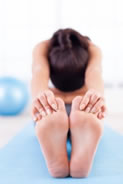 Australian surgeons are now practicing minimally invasive surgery for bunions to reduce the amount of pain and recovery time for patients. Michelle Thacker of North South Wales experienced both minimally invasive surgery and traditional bunion surgery for the bunions on her left and right feet. The difference between the two are that minimally invasive surgeries include a bunch of smaller 3mm incisions with the bunion drilled and realigned with screws; traditional surgeries include one large incision. After the second bunion surgery using minimally invasive surgery, Thacker stated, “the recovery time was much quicker - a lot less pain post op, I can barely see a scar and I was able to run after three months.”
Australian surgeons are now practicing minimally invasive surgery for bunions to reduce the amount of pain and recovery time for patients. Michelle Thacker of North South Wales experienced both minimally invasive surgery and traditional bunion surgery for the bunions on her left and right feet. The difference between the two are that minimally invasive surgeries include a bunch of smaller 3mm incisions with the bunion drilled and realigned with screws; traditional surgeries include one large incision. After the second bunion surgery using minimally invasive surgery, Thacker stated, “the recovery time was much quicker - a lot less pain post op, I can barely see a scar and I was able to run after three months.”
Bunion surgery usually occurs after non-surgical methods have proved to be ineffective. If you have any concerns contact Dr. Jordan W. Rachlin of New York. Our doctor will treat your foot and ankle needs.
What is a Bunion?
A bunion is formed of swollen tissue or an enlargement of boney growth, usually located at the base joint of the toe that connects to the foot. The swelling occurs by the bones in the big toe shifting inward, which impacts the other toes of the foot. This causes the area around the base of the big toe to become inflamed and painful.
Why do Bunions Form?
· Genetics – susceptibility to bunions are often hereditary
· Stress on the feet – poorly fitted and uncomfortable footwear that places stress on feet, such as heels, can cause bunions to form
How are Bunions Diagnosed?
Doctors often perform two tests – blood tests and x-rays – when trying to diagnose bunions, especially in the early stages of development. Blood tests help determine if the foot pain is being caused by something else, such as arthritis, while x-rays provide a clear picture of your bone structure to your doctor.
How are Bunions Treated?
· Refrain from wearing heels or similar shoes that cause discomfort
· Select wider shoes that can provide more comfort and reduce pain
· Anti-inflammatory and pain management drugs
· Orthotics or foot inserts
· Surgery
If you have any concerns please feel free to contact our office located in Monroe, NY. We offer the newest diagnostic tools and technology to treat your foot and ankle needs.

